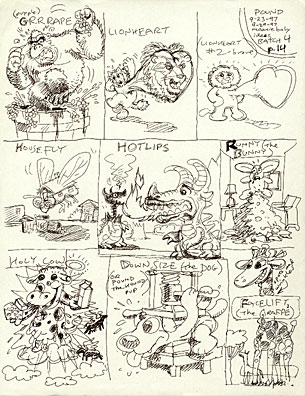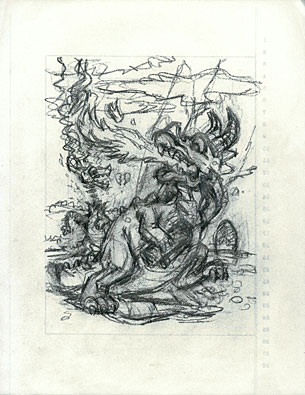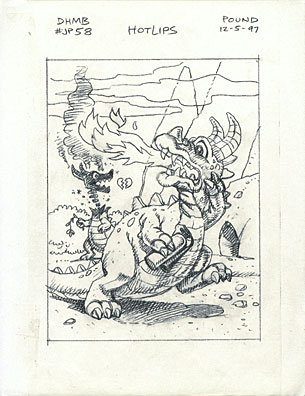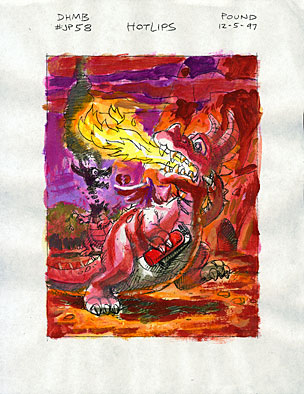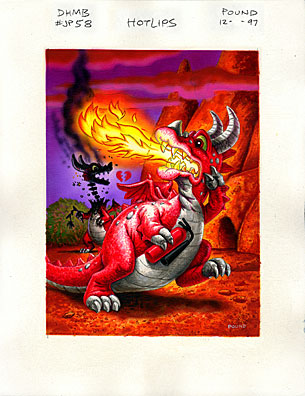Idea Sketches
For a card or sticker series, I quickly sketch out a number of ideas in ink, several to a page, without worrying if they're good or bad. Quantity counts. These can be faxed easily to the editor or art director. He might pick one or two ideas per page. 4 ideas here were used for Meanie Babies cards -- House Fly, Hot Lips, Holey Cow, and Downsize The Dog. |
Rough Layout
I use a template or layout for the card art, so I can see where the series logo and character's name will go, and where the edges of the art will be. With Wacky Packages and Garbage Pail Kids, I also had to leave room for a die-cut sticker shape around the main figure. I don't draw anything important in those places, unless a big "Mr. Hand" has to go off the edge of the art. Above, the template was printed on the back of the paper, so the lines were lighter. Working within this template, which is twice the printed card size, I do a rough layout drawing of the character and the scene. I focus on action, expression, humor and exaggeration. I like to put the characters in a scene, instead of in an empty space. I use a regular pencil for this. (Naturally, this step gets graphite all over my hands and the drawing.) |
Tight Pencil
I then put the tracing paper on white paper and make 2 copies. I fax a copy of my tight pencil art to the art director. I use the other copy for my color rough. Sometimes the art director asks for changes in the drawing at this point. |
Color Rough
I do this so I know what the colors are, what kind of lighting and shading things have, and to make sure everything is bold, clear and readable. And so I don't have to change my mind on the final art, where it takes a lot more time and effort to make a change. With the rough done, I can see ahead of time how the painting will look, and where I need to make an edge darker or lighter for greater punch. |
Final Artwork
I paint in acrylics, starting with light colors and going to darker ones. For Garbage Pail Kids, I usually painted the flesh areas first, then the clothes, then the props, and lastly the background, using some airbrush to contrast with the hand-painted figure. For Meanie Babies, I started doing the background first, so I wouldn't have to cut an airbrush stencil around all the completed parts. Doing the painting itself takes about eight or ten times as long as doing the rough. When I was younger, I used to hate the idea of painting something twice, but in earlier work where I skipped the tight pencil or color roughs, I had to paint almost everything in the painting about five times to get it right. I figured there must be a better way. The tight pencil and color rough sure help. These days, unlike the 1980's and earlier, original trading card art is usually returned to the artists, so that collectors have opportunities to buy originals. |
Final Printed Card
(The card above is shown in scale relative to the other art on this page) |
